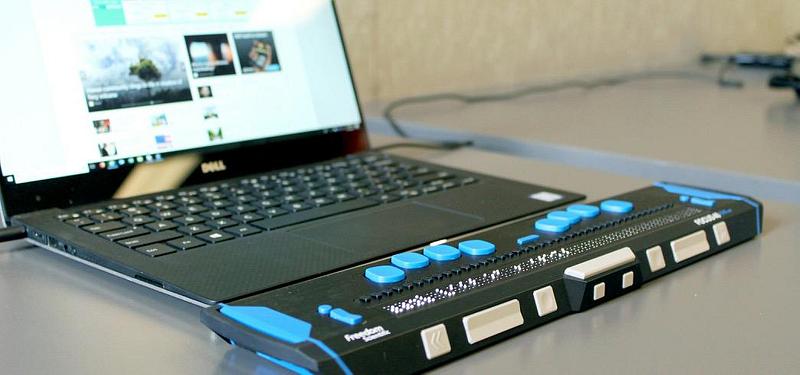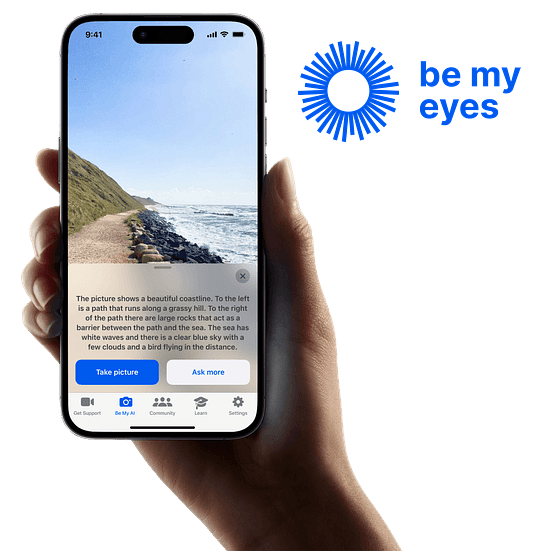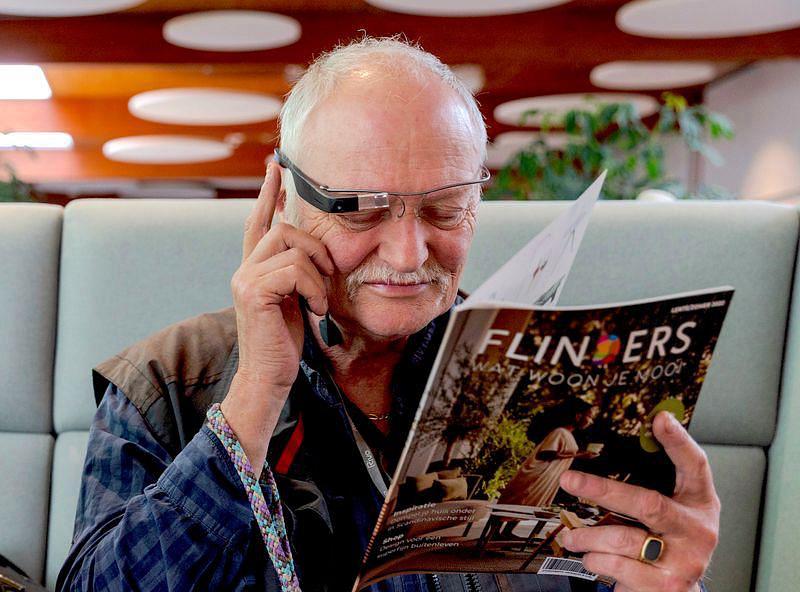Blindness Awareness Month: Innovations Empowering the Blind Community
31 October 2024 - Kieran Rooney

In a world increasingly driven by technology, accessibility has become paramount for fostering inclusion. For the blind community, recent innovations have made remarkable strides in improving independence, interaction, and quality of life. Through cutting-edge tools like screen readers, braille displays, AI-powered apps, and smartphones, technology is reshaping what is possible for individuals with visual impairments.
Screen Readers: A Gateway to Information
One of the most significant advancements in accessibility technology is the development of screen readers. These programs convert digital text into speech, enabling blind users to navigate the internet, read documents, and interact with software. Screen readers have been around for decades, with the first widely adopted program, Job Access With Speech (JAWS), introduced in 1989. Since then, other popular screen readers, such as Non-Visual Desktop Access (NVDA), have also emerged, providing access to computers, emails, and educational materials.
As technology evolves, so too does the sophistication of these tools. Today’s screen readers are not only more refined but also more compatible with a range of operating systems, browsers, and devices. Many modern screen readers come with enhanced features like touch gestures for smartphones and multilingual support, broadening the scope of what users can achieve. The ongoing improvements in compatibility and refinement allow for seamless integration with new technologies.
Braille Displays: Connecting the Digital and Tactile Worlds
For those who prefer braille, braille displays provide a seamless connection between the digital and tactile worlds. These devices translate on-screen text into braille characters, offering a more hands-on approach for blind individuals to consume content. They are particularly beneficial for reading in-depth, studying, or engaging with content in a manner that enhances comprehension through tactile feedback. Braille displays are also an excellent tool for ensuring privacy, allowing users to interact with digital content in a secure way.
Recent innovations in braille technology have seen the rise of multi-line braille displays, which can provide more than just one line of braille at a time. This development significantly improves the speed and efficiency with which users can interact with digital content.
Smartphone Apps: Empowering Independence on the Go
Smartphones, combined with a growing suite of accessibility apps, have revolutionised the way blind people engage with the world. Smartphones themselves, introduced in the early 2000s, have evolved from basic communication tools into powerful personal devices with an inbuilt accessibility suite to empower users to engage with digital services. Accessibility apps, many of which have emerged in the last decade, use a combination of camera technology and artificial intelligence (AI) to describe the environment, read signs, and assist with daily tasks.
- Be My Eyes: Introduced in 2015, this app connects blind users with sighted volunteers through live video calls, enabling assistance with tasks like reading labels, choosing outfits, or navigating new areas.
- Seeing AI: Launched in 2017, this app can read documents, recognise faces, and describe surroundings using AI-driven object recognition. The app allows users to be more independent in unfamiliar environments.

Such applications have become invaluable for boosting autonomy, offering blind individuals real-time interpretations of their surroundings. These apps, together with evolving smartphone technology, demonstrate a decade of progress in empowering users on the go.
AI: A Game Changer in Accessibility
The incorporation of artificial intelligence (AI) into accessibility tools represents one of the most transformative areas of progress. AI has been pivotal in making interactions with technology smoother, smarter, and more intuitive. For instance, voice assistants like Siri, Google Assistant, and Alexa—initially launched between 2011 and 2014—have continued to evolve. Though these assistants have been around for a while, AI advancements are making them increasingly sophisticated, allowing for seamless, voice-activated navigation of devices and services.
AI powers numerous emerging innovations, such as optical character recognition (OCR), which converts images or physical documents into readable text, and real-time language translation, making global communication more accessible. Additionally, AI’s ability to recognise patterns and adapt to individual user preferences offers even more personalised experiences for blind individuals, enhancing independence and efficiency in day-to-day tasks.
The latest advancements in AI are pushing the boundaries further, with features like predictive text, personalised voice commands, and even AI-powered smart glasses(this will open in a new window) in development. These advancements mark a major breakthrough in accessibility technology, offering tools that are not only easy to use but also adapt seamlessly to the diverse needs of their users.

The Future: What’s on the Horizon?
While the current landscape of assistive technology for the blind is comprehensive, the future holds even more promise. Further advancements in AI-driven smart glasses and wearable devices are being developed to assist with real-time navigation, object recognition, and even emotional context recognition in conversations. These innovations, still in early stages, have the potential to break down even more barriers, giving blind individuals access to information and interactions in ways that have never been possible before.
Moreover, haptic feedback technology is gaining momentum, offering users a new way to experience digital content through touch. From more advanced braille devices to tactile maps that allow for better spatial awareness, the tactile world is being digitised to meet the needs of those with visual impairments.
Technology has always had the potential to drive inclusivity, and nowhere is this more evident than in the tools developed for the blind community. From screen readers to AI-powered apps and braille displays, technology is empowering individuals to take control of their environment and live more independent, fulfilling lives.
As we look ahead, the next wave of technological advancements will continue to close gaps in accessibility, offering even more personalised, intuitive, and adaptive solutions. For the blind community, this means increased independence, richer experiences, and a greater ability to participate in the digital world on their own terms.
The fusion of AI with accessibility tools holds the promise of a future where technology doesn’t just adapt to our needs—it anticipates them, ensuring that everyone, regardless of ability, can engage with the world fully and independently.
You might also be interested in...
Making Hospitality Welcoming for All: A Digital Accessibility Guide for Hotels
21 November 2025Hotels have long focused on physical accessibility, but true inclusion extends online. This practical guide explains how to make your hotel website accessible for all guests—meeting global WCAG and EAA standards, expanding your reach, and creating a seamless booking experience for every visitor.
Read the article: Making Hospitality Welcoming for All: A Digital Accessibility Guide for Hotels3 perspectives on how AI is shaping inclusive digital experiences
10 November 2025AI is transforming digital accessibility — empowering disabled users, enhancing how we evaluate digital experiences, and reshaping how inclusive products are designed. This article explores three key perspectives and highlights how AI can support more equitable, human-centred digital experiences when used thoughtfully and collaboratively.
Read the article: 3 perspectives on how AI is shaping inclusive digital experiencesWCAG 2.2 is now an ISO standard: Why it belongs on your board agenda
3 November 2025WCAG 2.2 has become an official ISO/IEC 40500:2025 standard, elevating digital accessibility to a globally recognised legal and procurement benchmark. Find out why this matters to your board, procurement, and ESG strategies.
Read the article: WCAG 2.2 is now an ISO standard: Why it belongs on your board agenda